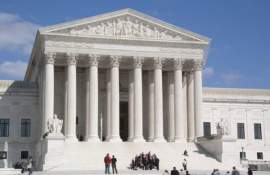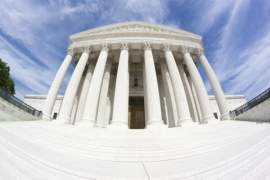
Planned Parenthood v. Casey

Planned Parenthood v. Casey
Planned Parenthood v. Casey was a 1992 case decided by the United States Supreme Court that challenged the constitutionality many of Pennsylvania state regulations concerning abortion. The Court came to a plurality decision for Planned Parenthood v. Casey that upheld the constitutional right for an individual to have an abortion but also lowered the standard for analyzing the restrictions of this right, causing one regulation to be invalid while upholding others.
The regulations in question in Planned Parenthood v. Casey discussed these issues:
• Biased Counseling: a woman wishing to have an abortion needed to receive state-scripted counseling about abortion and childbirth’s health risks as well as the unborn child’s probable gestational. She needed to know about printed materials available from the State describing the fetus. She could not have the abortion unless she certified in writing being informed of these printed materials.
• After the initial appointment for state-scripted counseling, the woman had to wait 24 hours before an abortion procedure.
• Women under18 required consent from one parent before an abortion. Without this, the woman could try to convince a judge in court of her ability to give informed consent and that an abortion was in her best interests.
• A married woman would have to provide a statement signed by the husband saying he knows about the abortion before the procedure.
• Reporting requirements required reports to the state on each abortion that included names of involved physicians, referring agency/physician, facility name, woman's age, number of previous pregnancies and abortions, type of abortion procedure, the gestational age, the date of abortion, preexisting medical conditions likely to complicate pregnancy, medical complications post abortion, reason if the abortion was medically necessary, fetus weight, and woman’s marital status.
o All abortion facilities would have to file quarterly reports with the number of abortions given broken down by the trimester.
The court upholding all of the provisions in Planned Parenthood v. Casey except the one for spousal consent requirement, yet did not overrule Roe V. Wade. This created a new method of looking at abortion cases.
The actual ruling for Planned Parenthood v. Casey was a 5-4 decision without a clear majority rule, but rather a plurality decision. Justices O'Connor, Souter, and Kennedy wrote the plurality opinion, partly joined by Justices Blackmun and Stevens. Justices White, Scalia, Thomas and Chief Justice Rehnquist dissented. The plurality decision did not overrule Roe V. Wade but still said that any state laws banning abortion were unconstitutional.
However, the Court did not follow the trimester framework set in Roe v. Wade, and instead looked at the undue burden standard shown in Webster v. Reproductive Health Services. This was set at as a substantial obstacle in the way of a woman looking for an abortion of a fetus that was unviable. When applying this to the provisions mentioned, only spousal consent was considered an undue burden. Planned Parenthood v. Casey is a significant case because it the standards created in the case are the current standard used by the Court in deciding any laws that restrict abortion. The ruling in Planned Parenthood v. Casey has allowed states to create and pass more laws that restrict access to abortion.


















